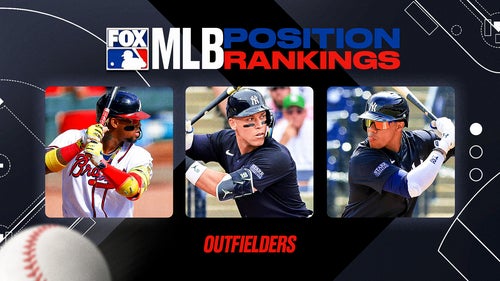
Extending These Three Yankees Should Be a Priority This Winter

Sep 21, 2016; St. Petersburg, FL, USA; New York Yankees starting pitcher Masahiro Tanaka (19) throws a pitch during the first inning against the Tampa Bay Rays at Tropicana Field. Mandatory Credit: Kim Klement-USA TODAY Sports
The New York Yankees are known to be stingy with contract extensions, but they should seriously consider locking up these three players this offseason.
For a long time the New York Yankees had a team policy of not negotiating a new contract with players until their old deal had expired. When their tremendous financial advantage was at its peak and they could outbid every other MLB club for whatever player they wanted, this policy made a lot of sense.
The Yankees no longer play by their own set of rules for a variety of reasons. The luxury tax and other revenue sharing measures have been pretty effective in leveling the playing field. In addition, current principal owner Hal Steinbrenner is more, *cough*, financially minded than his father was, meaning the product on the field is often secondary to making sound business decisions.
Now that they have apparently bumped up against the ceiling of their payroll, it probably makes sense for New York to adopt some of the strategies of the peasants they used to laugh at and look for some players on their roster who could be extended at a discount rather than waiting and paying full price for them on the open market.
The team made it clear they have moved on from their no-extensions policy when they locked up Brett Gardner to his four-year $52 million deal before the 2014 season. That move has worked out pretty well for them, as Gardner is one of their few veteran trade chips this winter because of his reasonable contract.
Hopefully, the success of Gardy’s extension pushes them to explore similar deals with these three players this winter.
Sep 25, 2016; Toronto, Ontario, CAN; New York Yankees starting pitcher Michael Pineda (35) sets to pitch in the second inning against Toronto Blue Jays at Rogers Centre. Mandatory Credit: Kevin Sousa-USA TODAY Sports
Michael Pineda
It’s possible that all three of the established starting pitchers currently on the Yankees roster will depart after next season if the front office doesn’t take action to retain them. One pitcher from that group who might be particularly amenable to an extension because he hasn’t yet received a big payday in his career is Michael Pineda.
According to Baseball-Reference, Big Mike has earned $8.4 million to date over the course of his career and MLB Trade Rumors projects him to earn another $7.8 million in his final year of arbitration. That’s nowhere near what he’d rake in on the free agent market, even with his performance as frustratingly inconsistent as it has been.
Of course, Pineda has hardly been the picture of health in his career, and could be more willing than most to take a smaller, but certain paycheck this winter. He missed almost all of the 2012-2013 seasons with a serious shoulder injury, as well as half of his 2014 starts with a back issue. Mike has been pretty healthy the last two years, but he could go from an
Mike has been pretty healthy the last two years, but he could potentially go from an eight-figure contract to a non-guaranteed deal with just one twinge in his right shoulder. If the Yankees offer something reasonable, he would likely give it some serious thought.
So what would a Pineda extension look like? Jeff Samardzija set the bar for talented but underperforming starters pretty high last winter with his five year $90 million contract. Shark had a longer track record and fewer health issues than Pineda, but Big Mike is four years younger than Samardzija was when he signed his deal.
Mike Leake was roughly Pineda’s age when he signed his five year $80 million deal last winter. Leake doesn’t have Pineda’s upside, but he’s definitely been more consistent. If Leake, Shark, and Ian Kennedey can get five years, that’s probably about the right length for Pineda.
Since its an extension, the Yankees would need to get some kind of discount to make it worth the risk on their part. I think five years at $13 million annually from 2017-2021 (Pineda’s age 28-32 seasons) would make sense for both sides. He could probably land $15-plus million per year as a free agent this year, so
Pineda could probably land $15-plus million per year as a free agent this year, and more next year if he finally has that breakout campaign everyone’s been waiting for the last two seasons. New York gets a little bit of certainty in their long-term rotation picture. For all his faults, Pineda has front of the rotation stuff, and talent like his is worth betting on.
Sep 27, 2016; Bronx, NY, USA; New York Yankees shortstop Didi Gregorius (18) turns a double play on Boston Red Sox center fielder Jackie Bradley Jr. (25) during the fifth inning at Yankee Stadium. Mandatory Credit: Adam Hunger-USA TODAY Sports
Didi Gregorius
There are certainly convincing arguments to be made that the Yankees should just wait and see what happens with Gregorius. The team is certainly not hurting for shortstop prospects in the minor leagues, with both Gleyber Torres and Jorge Mateo looking like future stars. He’s also coming off easily the best season of his young career, and if you think his recent power spike is a fluke, then you probably don’t want to pay him as if that is the new normal.
On the other hand, Gregorius has seen his offensive numbers trending upward each of the last three seasons. He’s worked hard to address his issues against left-handed pitching, which is a big reason for his success in 2016. He hit .320/.357/.469 (124 OPS+) against them this year, which is markedly higher than his career .248/.306/.336 (84 OPS+) slash line against southpaws.
Gregorius is the closest thing the Yankees have to an established young star on the position player side of things. He was their most reliable hitter all year and was finally promoted out of the bottom of the lineup in the second half. The major defensive metrics didn’t love his fielding work as much as in 2015, but he remains an above-average defender at short who is extremely athletic and has a cannon for an arm.
Want your voice heard? Join the Yanks Go Yard team!
There is not as much pressure to sign Gregorius long-term as there is for Pineda. He has three years of control remaining and several potential replacements nearing the majors. That said, the Yankees have very few position players in their prime years at the moment. Gregorius is very valuable both on the field and as a trade chip. Even if he’s eventually replaced, we’ve seen with Gardner that a reasonable extension can provide a boost in value.
So what kind of extension would make sense for both sides. Gaining some certainty on his three remaining arbitration-eligible seasons would be a start. MLB Trade Rumors projects him for $5.1 million after making $2.425 million in 2016 (Gregorius was a super-two).
Sep 21, 2016; St. Petersburg, FL, USA;New York Yankees starting pitcher Masahiro Tanaka (19) walks back to the dugout against the Tampa Bay Rays at Tropicana Field. Mandatory Credit: Kim Klement-USA TODAY Sports
Masahiro Tanaka
The looming loss of the best player on the Yankees after next season is something many fans have yet to come to terms with. If Masahiro Tanaka doesn’t opt out of his current contract after 2017, it means something went terribly wrong, like TJ surgery wrong, because even after a mediocre season it is almost certain that he’ll be able to top the three years and $67 million remaining on his deal after his age 28 season.
Much more likely, Tanaka continues to be one of the most dominant pitchers in the game next year, and lands something close to the $200 million-plus deals that Max Scherzer and Zack Greinke were able to land over the last two offseasons.
The Yankees know better than anyone the state of Tanaka’s elbow, so if they are willing to let him walk after 2017, they may have good reason to not want to invest big money in a guy who may be damaged goods.
However, assuming he has successfully rehabbed the partial tear that caused him to miss a large chunk his first MLB season in 2014, it would be very hard to let a front-of-the-rotation starter in his prime just walk away without a fight. There are very few aces in MLB, and they are not easy to acquire. If you’ve got one in your organization, all measures should be taken to keep him, especially when you are the richest team in baseball.
Maybe tacking another two to three years and bumping his average annual value up from $22-23 million to $25 million would be enough to get it done? That would be something like five and $125 or six and $150, which is considerably less than Tanaka’s value on the open market, but does protect him against a devastating injury this year. I think both sides would at least consider that deal.
More from Yanks Go Yard
This article originally appeared on











